Now, don’t get us wrong, beloved patrons–we have any number of sensational new books that are quite eager to join you this crisp autumn weekend for any adventures (or blanket-fort hiding) in which you care to indulge. But this week, in honor of Banned Book Week, we thought it might be fun to introduce you to some of the challenged and outright banned books that have found a home on our shelves, and which also richly deserve a read. Come on in, celebrate your right to read, and try one today!

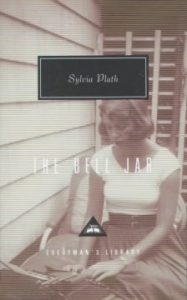 The Bell Jar: There is a serious lack of respect paid to Sylvia Plath and her writings, and so many descriptions of this book emphasis the “crack up Esther Greenwood”, and revel in the “the dark and harrowing corners” of her psyche that they tend to miss how achingly well this book portrays the struggles of an intelligent woman with big dreams of independence and a fulfilling career who is relentlessly pushed towards marriage and a traditional role as housewife. Her breakdown is not only the result of her own inner demons, but also the way the world around her continues to repress her, and Plath makes these feelings of frustration, repression, and insecurity utterly tangible, and gives us access to her own brilliant and troubled mind. This is a book that challenges society and our understanding of mental illness, the role of women in society, and the way their individuality was (and is) challenged. It has been on banned book lists several times due to Esther’s described suicidal tendencies and attempted suicide scene. Some have claimed to find it inappropriate as it may entice readers to do the same. According to the University of Virginia’s Censored Exhibit online, “in the late 1970s, The Bell Jar was suppressed for not only its profanity and sexuality but for its overt rejection of the woman’s role as wife and mother.”
The Bell Jar: There is a serious lack of respect paid to Sylvia Plath and her writings, and so many descriptions of this book emphasis the “crack up Esther Greenwood”, and revel in the “the dark and harrowing corners” of her psyche that they tend to miss how achingly well this book portrays the struggles of an intelligent woman with big dreams of independence and a fulfilling career who is relentlessly pushed towards marriage and a traditional role as housewife. Her breakdown is not only the result of her own inner demons, but also the way the world around her continues to repress her, and Plath makes these feelings of frustration, repression, and insecurity utterly tangible, and gives us access to her own brilliant and troubled mind. This is a book that challenges society and our understanding of mental illness, the role of women in society, and the way their individuality was (and is) challenged. It has been on banned book lists several times due to Esther’s described suicidal tendencies and attempted suicide scene. Some have claimed to find it inappropriate as it may entice readers to do the same. According to the University of Virginia’s Censored Exhibit online, “in the late 1970s, The Bell Jar was suppressed for not only its profanity and sexuality but for its overt rejection of the woman’s role as wife and mother.”
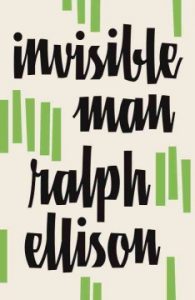 Invisible Man: Ralph Ellison’s seminal novel, published in 1952, won the National Book Award for fiction–before becoming a frequently challenged and banned book. The nameless narrator of the novel describes growing up in a black community in the South, attending a Negro college from which he is expelled, moving to New York and becoming the chief spokesman of the Harlem branch of “the Brotherhood”, and retreating amid violence and confusion to the basement lair of the Invisible Man he imagines himself to be. By turns funny, frightening, visceral and brutally honest, this book cautions readers not to judge a person’s humanness of the value only of what can be seen (namely, skin color). As his narrator realizes, this process leads people to “see only my surroundings, themselves, or figments of their imagination–indeed, everything and anything except me.” This book was most recently banned in 2013 by the Randolph County Board of Education in central North Carolina after a parent a parent called the novel “too much for teenagers.” The decision was 5-2, with one board member claiming, “I didn’t find any literary value.” The ban was lifted several weeks later after a massive public outcry (and after Vintage Books handed out free copies to anyone in the area who wanted one).
Invisible Man: Ralph Ellison’s seminal novel, published in 1952, won the National Book Award for fiction–before becoming a frequently challenged and banned book. The nameless narrator of the novel describes growing up in a black community in the South, attending a Negro college from which he is expelled, moving to New York and becoming the chief spokesman of the Harlem branch of “the Brotherhood”, and retreating amid violence and confusion to the basement lair of the Invisible Man he imagines himself to be. By turns funny, frightening, visceral and brutally honest, this book cautions readers not to judge a person’s humanness of the value only of what can be seen (namely, skin color). As his narrator realizes, this process leads people to “see only my surroundings, themselves, or figments of their imagination–indeed, everything and anything except me.” This book was most recently banned in 2013 by the Randolph County Board of Education in central North Carolina after a parent a parent called the novel “too much for teenagers.” The decision was 5-2, with one board member claiming, “I didn’t find any literary value.” The ban was lifted several weeks later after a massive public outcry (and after Vintage Books handed out free copies to anyone in the area who wanted one).
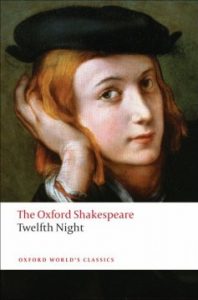 Twelfth Night: Yup, Shakespeare is among the list of rebels, revolutionaries, and deviants whose books have been banned. Named for the twelfth night after Christmas, the end of the Christmas season, this classic play examines themes of love and power as Countess Olivia captures the attention of the Duke (or Count) Orsino. She is also courted by two other would-be suitors, the pretentious steward, Malvolio, and Sir Andrew Aguecheek. Onto this scene arrive the twins Viola and Sebastian; caught in a shipwreck, each thinks the other has drowned. Viola disguises herself as a male page and enters Orsino’s service. Orsino sends her as his envoy to Olivia—only to have Olivia fall in love with the messenger. The play complicates, then wonderfully untangles, these relationships with all of Shakespeare’s wit and extraordinary talent for characterization. However, it was banned in Merrimack, New Hampshire in 1996, after a policy, titled the “Prohibition of Alternative Lifestyle Instruction,” banned any and all discussion of homosexuality or ‘cross-dressing’ in the classroom. The board members who supported the act were voted out in the subsequent board election.
Twelfth Night: Yup, Shakespeare is among the list of rebels, revolutionaries, and deviants whose books have been banned. Named for the twelfth night after Christmas, the end of the Christmas season, this classic play examines themes of love and power as Countess Olivia captures the attention of the Duke (or Count) Orsino. She is also courted by two other would-be suitors, the pretentious steward, Malvolio, and Sir Andrew Aguecheek. Onto this scene arrive the twins Viola and Sebastian; caught in a shipwreck, each thinks the other has drowned. Viola disguises herself as a male page and enters Orsino’s service. Orsino sends her as his envoy to Olivia—only to have Olivia fall in love with the messenger. The play complicates, then wonderfully untangles, these relationships with all of Shakespeare’s wit and extraordinary talent for characterization. However, it was banned in Merrimack, New Hampshire in 1996, after a policy, titled the “Prohibition of Alternative Lifestyle Instruction,” banned any and all discussion of homosexuality or ‘cross-dressing’ in the classroom. The board members who supported the act were voted out in the subsequent board election.
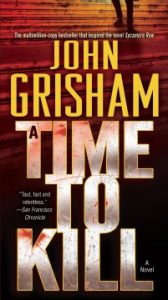 A Time to Kill: John Grisham’s now well-known legal thriller has been challenged multiple times because of the rape and murder of a young Black girl that is depicted as a crucial part of the plot.
A Time to Kill: John Grisham’s now well-known legal thriller has been challenged multiple times because of the rape and murder of a young Black girl that is depicted as a crucial part of the plot.
Set in the tiny town, mostly white town of Clanton, Mississippi, this is the story of Jake Brigance, a young lawyer who comes to the defense of a black Vietnam war hero who kills the white druggies who raped his child. For ten days, as burning crosses and the crack of sniper fire spread through the streets of Clanton, the nation sits spellbound–but for Brigance and his client, this is a very personal matter of life and death. Released in 1989, and based on actual events, the book was only given a modest publication run, but grew in popularity after it became a feature film. Immediately after the release of the movie adaptation, it was repeatedly challenged or banned in Texas public schools over an 18-month period for themes of racism and sexually-graphic material. It was also challenged in 2006, but later retained, in the advanced English classes of Fargo, North Dakota North High School with complaints about the graphic rape and murder scenes making it a book “that children get bad ideas from.”
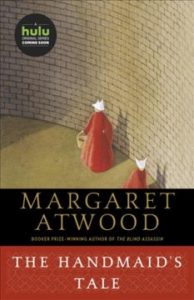 The Handmaid’s Tale: Margaret Atwood’s classic dystopian novel (and the big winner at this year’s Emmy Awards, thanks to the Hulu adaptation) has also been the subject of a number of challenges. In the Republic of Gilead, women are not allowed to have jobs or money, their reproductive health is under the state’s control and they are absolutely forbidden from reading and writing. The protagonist—stripped of her previous name and given the temporary name Offred (as she currently belongs to a Commander named Fred)—is among a minority of women who remain fertile. As a handmaid, she is assigned to various Commanders and their wives to try to conceive a child for them. If she fails at too many such assignments or breaks the rules, she could be sent to “the Colonies” to clean up nuclear waste or she could be killed. The novel has faced steady challenges, mostly in high schools, since it was published for a number of reasons–according to the ALA’s Office for Intellectual Freedom, a number of those reasons are: “Profanity; lurid passages about sex; statements defamatory to minorities, god, women and the disabled; violence; hopelessness; age-inappropriate; graphic sex; vulgar; offensive to Christians; violently graphic and morally corrupt.”
The Handmaid’s Tale: Margaret Atwood’s classic dystopian novel (and the big winner at this year’s Emmy Awards, thanks to the Hulu adaptation) has also been the subject of a number of challenges. In the Republic of Gilead, women are not allowed to have jobs or money, their reproductive health is under the state’s control and they are absolutely forbidden from reading and writing. The protagonist—stripped of her previous name and given the temporary name Offred (as she currently belongs to a Commander named Fred)—is among a minority of women who remain fertile. As a handmaid, she is assigned to various Commanders and their wives to try to conceive a child for them. If she fails at too many such assignments or breaks the rules, she could be sent to “the Colonies” to clean up nuclear waste or she could be killed. The novel has faced steady challenges, mostly in high schools, since it was published for a number of reasons–according to the ALA’s Office for Intellectual Freedom, a number of those reasons are: “Profanity; lurid passages about sex; statements defamatory to minorities, god, women and the disabled; violence; hopelessness; age-inappropriate; graphic sex; vulgar; offensive to Christians; violently graphic and morally corrupt.”
Until next week, beloved patrons, happy reading!
